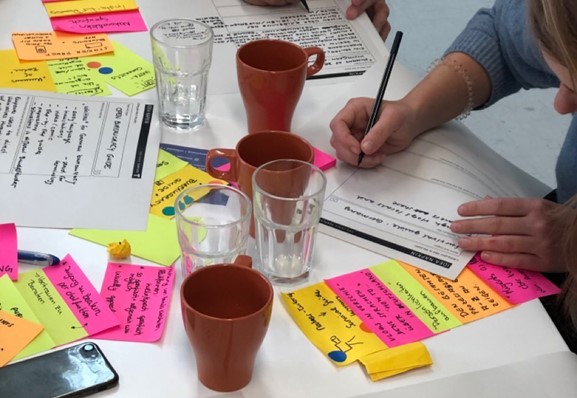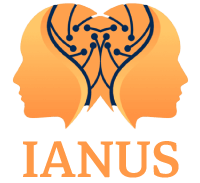Co-creation is an increasingly popular concept in research and innovation, and it is often seen as a precondition to create impact. In short, we could define co-creation as the process “by which products, services, and experiences are developed jointly by companies and their stakeholders” (Prahala & Ramaswamy, 2000).
While it has spread to the environment of research and innovation projects, the term originates from business and refers to interactive approaches to collaborate with stakeholders and clients to produce and gather new insight into one’s business, with the ultimate goal of improving the business’ value and satisfaction for customers.
The alignment between business professionals and stakeholders can, of course, only be achieved by acknowledging the differences and strengths of each party, to enable the best chances for a beneficial exchange of knowledge and perspectives. Therefore, more than a specific kind of user research, co-creation is about creating an environment that fosters learning and discovery, open to different viewpoints. This comes with its own challenges, so it is not a surprise that in the context of academic research, even if co-creation practices could help foster research appropriation and research engagement, the practice is slow to take hold. Co-creation is often deemed time and resource-consuming and it can be challenging to adapt traditional models of research practice and dissemination to the culturally complex modes of co-creation.

Additionally, as some authors lament, the popularity of the concept has contributed to turning ‘co-creation’ in a buzz-word that is “assumed to be able to achieve a variety of positive effects,” from reforming the public sector, to enabling creativity and innovative solutions (Puerari & De Koning, 2018). IANUS partners studying co-creation highlight that the concept has hardly been problematized in academic literature or even thoroughly defined in EU-policies. This had the consequence of creating a tendency to regard co-creation as a ‘tick-box-exercise’, that is an exercise of merely including stakeholders into processes but without implementing actual, deeper changes. This resulted in neglecting the full potential of co-creation (Meister-Broekema, Bulder, & Horlings, 2023).
As a consequence, we want to advance the knowledge on existing evaluation frameworks and indicators that analyze co-creation processes in various contexts and that try to assess the impacts of co-creation. As a project devoted to improving but also critically evaluating trust in science, we want to carefully investigate co-creation processes in various contexts and try to assess its actual impact. To do so, we surveyed six different evaluation frameworks for co-creation and derived indicators for the quality of co-creation processes. We will share our findings in the next updates, so stay tuned for more from the IANUS project.
References
Meister-Broekema, P., Bulder, E. A., & Horlings, L. (2023). Evaluating co-creation in social innovation projects: Towards a process orientated framework for EU projects and beyond. Research Evaluation 00, 1-13.
Prahala, C. K., & Ramaswamy, V. (2000). Co-Opting Customer Competence. Havard Business Review, 78, 79 90.
Puerari, E., & De Koning, J. e. (2018). Co-Creation Dynamics in Urban Living Labs. Sustainability, 10, 1893.
